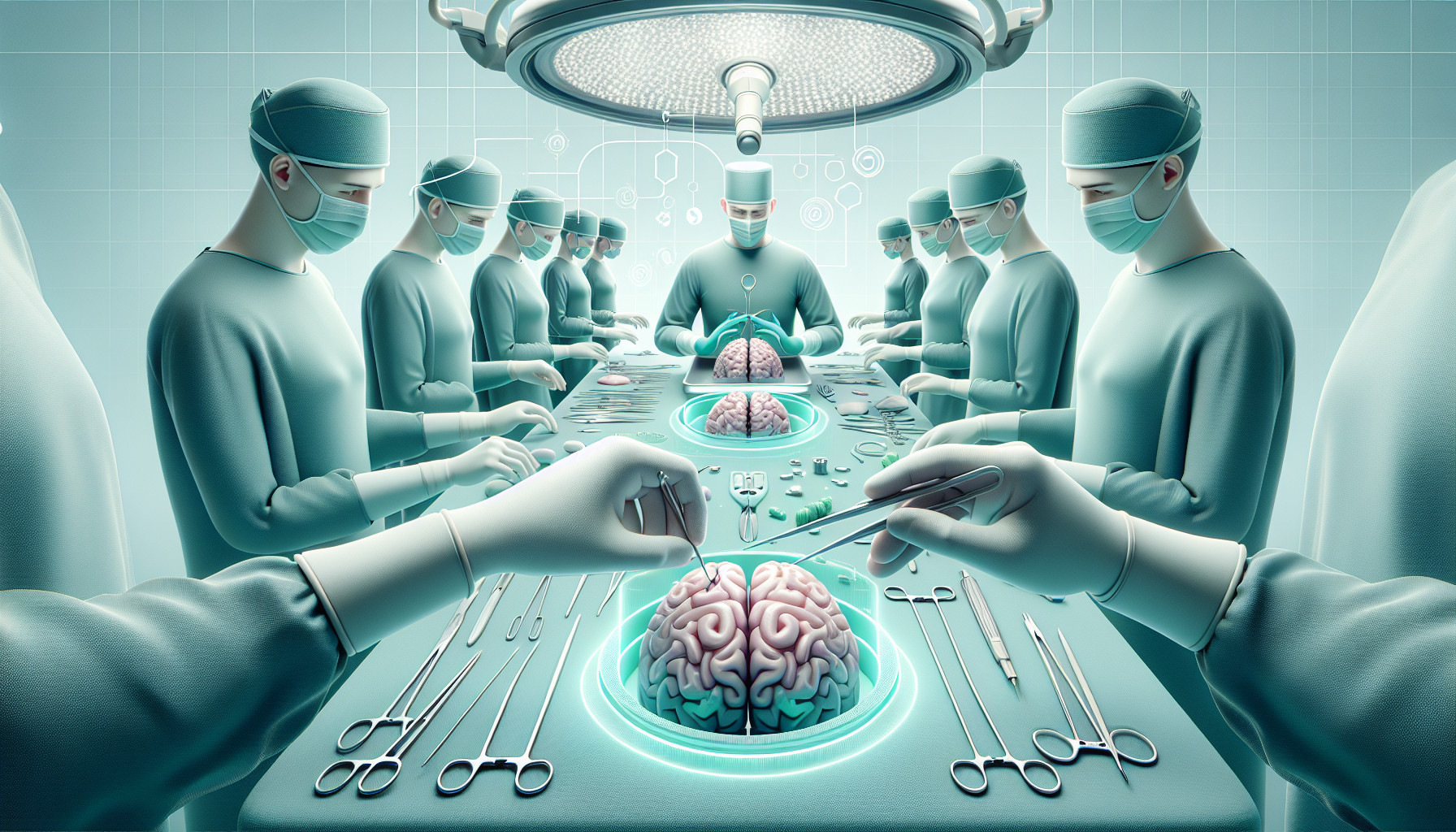Our Summary
This research paper discusses how children, like adults, can greatly benefit from neurophysiologic mapping and monitoring during brain surgery. This technique helps to reduce the risk of lasting neurological damage, particularly when the surgery is close to critical areas of the brain. These methods are especially useful when treating conditions common in children, like neurodevelopmental lesions, which often cause epilepsy that is resistant to medication. By accurately identifying and removing the area of the brain causing the seizures, this surgery can be successful. However, using these techniques in children comes with its own challenges. For instance, it’s difficult to perform certain procedures, like awake brain surgery and language testing, in children. Children may also be more likely to have seizures during surgery, and the doses and types of anaesthetic used can affect a child’s brain differently than an adult’s, making the results of the brain monitoring harder to interpret. The paper details the methods and challenges of using these techniques in children’s brain surgery.
FAQs
- How does neurophysiologic mapping and monitoring during brain surgery benefit children?
- What kind of conditions in children can be treated using neurophysiologic mapping and monitoring techniques?
- What are some challenges of using neurophysiologic mapping and monitoring techniques in children’s brain surgery?
Doctor’s Tip
A doctor might tell a patient undergoing brain surgery to follow all pre-operative instructions carefully, including fasting before surgery and avoiding certain medications. They may also advise the patient to stay in close communication with their medical team and report any changes in symptoms or concerns promptly. Additionally, the doctor may stress the importance of following post-operative care instructions, including taking prescribed medications, attending follow-up appointments, and participating in rehabilitation therapy if necessary. Overall, the doctor may reassure the patient that the medical team will be monitoring their brain activity closely during surgery to ensure the best possible outcome.
Suitable For
Patients who are typically recommended for brain surgery include those with:
Tumors: Brain tumors are often treated with surgery to remove as much of the tumor as possible. The location and type of tumor will determine if surgery is an appropriate treatment option.
Epilepsy: Patients with epilepsy that is not controlled by medication may be recommended for surgery to remove the area of the brain causing the seizures.
Traumatic brain injury: Severe traumatic brain injuries may require surgery to reduce swelling, remove blood clots, or repair damaged tissue.
Vascular malformations: Abnormal blood vessels in the brain, such as arteriovenous malformations, may require surgery to prevent bleeding or reduce the risk of stroke.
Hydrocephalus: Patients with hydrocephalus, a condition characterized by the buildup of cerebrospinal fluid in the brain, may require surgery to implant a shunt to drain the excess fluid.
Movement disorders: Patients with movement disorders like Parkinson’s disease or essential tremor may benefit from deep brain stimulation surgery to implant electrodes in the brain to regulate abnormal brain activity.
Congenital abnormalities: Children born with congenital brain abnormalities, such as Chiari malformation or spina bifida, may require surgery to correct the issue and prevent further complications.
Overall, brain surgery is recommended for patients with conditions that cannot be effectively treated with medication or other non-invasive treatments. The decision to undergo brain surgery is typically made by a team of specialists, including neurosurgeons, neurologists, and other healthcare professionals, who will assess the patient’s individual case and determine the best course of treatment.
Timeline
Before brain surgery:
- Patient undergoes various tests and evaluations to determine the location and extent of the brain abnormality.
- Patient meets with the surgical team to discuss the procedure, risks, and potential outcomes.
- Patient may need to stop taking certain medications or make lifestyle changes leading up to the surgery.
- Patient may undergo pre-operative imaging tests to help the surgical team plan the procedure.
After brain surgery:
- Patient is closely monitored in the intensive care unit immediately following the surgery.
- Patient may experience pain, swelling, and discomfort at the surgical site.
- Patient may need to stay in the hospital for several days to recover and receive post-operative care.
- Patient may need physical therapy, speech therapy, or other rehabilitation services to regain function and strength.
- Patient will have follow-up appointments with the surgical team to monitor recovery and address any concerns or complications.
What to Ask Your Doctor
- What is the specific diagnosis that necessitates brain surgery?
- What are the potential risks and complications associated with the surgery?
- How will neurophysiologic mapping and monitoring be used during the surgery?
- What specific areas of the brain will be monitored and why?
- How will the results of the monitoring guide the surgical procedure?
- What is the success rate of this type of surgery in children?
- How will the child’s age and development impact the surgery and recovery process?
- Are there any long-term effects or considerations to be aware of post-surgery?
- What is the expected recovery time and rehabilitation process for the child?
- Are there any alternative treatment options that should be considered before proceeding with surgery?
Reference
Authors: Alsallom F, Simon MV. Journal: J Clin Neurophysiol. 2024 Feb 1;41(2):96-107. doi: 10.1097/WNP.0000000000001054. PMID: 38306217
